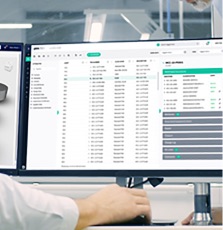



Before we address the ‘sins’, for those of our readers who are more familiar with Information Management you will be aware of Information Handover Specifications (IHS), also sometimes known as an Engineering Handover Specification (EHS) or even a Reference Data Library (RDL) but for the benefit of those who are not familiar:
What is it?
The IHS is the vehicle where the business sets expectations of the Information requirements that ‘must’ be delivered as part of the execution phase of the project by its suppliers and in some cases, stating when the deliverable is scheduled for exchange.
This specification typically takes the form of word documents or excel spreadsheets, in some cases, these can be issued as scanned or pdf documents of originally electronic materials that make searching the specification more arduous than is warranted. Very rarely is the specification provided in a searchable online form, let alone providing a set of validation tools that would help implement tag and/or document numbering requirements
Why do you need an IHS?
The IHS serves several purposes but most commonly.
What happens if you have a poor IHS?
Over time if left unaddressed a poorly produced specification will have a negative impact throughout the future life of an operating facility.
In our experience, there are many reasons as to why the starting point of an IHS has led to a poor outcome for the information that got handed over to operations. We go into more detail about this in our Insights paper ‘The 7 deadly sins of information handover specification, by sharing our experience of managing information handover, some of the common pitfalls and the ‘do’s and ‘don’ts’ for those of you who hold a stake in this important stage of any project.
To download the Datum360 7 Sins of Information Handover Specification, just hit the download button below.



The Datum360 platform provides effortless delivery of your Engineering Information and Asset Data.